This LionSteel EDC Sports Some Unique Design Elements That Make It Cool, But There are Issues.
Why don’t we start with a spoiler: this is a cool knife that I love. Which makes it being terrible all the more infuriating. Which has a lot to do with why I hate it so bad. And I’m saying all this in the most loving way.
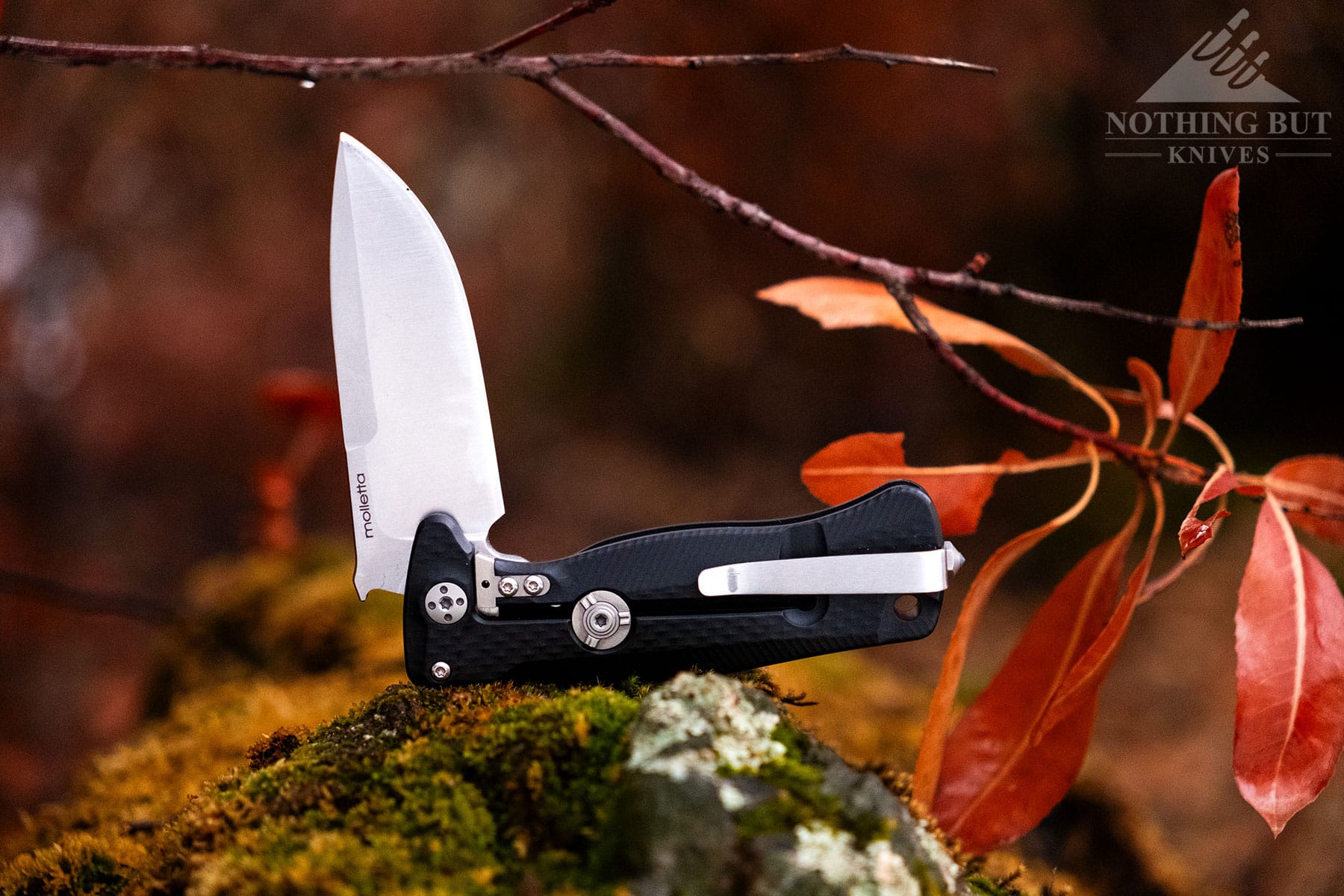
The SR-22’s a folder that made it the hands and hearts of a variety of knife reviewers.
It’s a finely-designed knife that, by rights, should be a be-all-end-all EDC blade.
Instead, it sports a couple of fit and finish issues that shouldn’t be present in a knife in this
price range, and one major design issue that can quickly turn into a safety problem. (None of
these are insurmountable, but you should pay extra attention when considering buying one of
these folders.)
Specifications
| Overall Length: | 7.25” |
| Blade Length: | 3.1” (2.875” cutting edge) |
| Blade Steel: | Sleipner |
| Open System: | Flipper |
| Blade Thickness: | 0.16” |
| Blade Shape: | Drop point |
| Blade Grind: | Convex |
| Pocket Clip: | Deep-carry, right-side only |
| Handle Length: | 4.1” |
| Handle Material: | Aluminum |
| Lock Type: | Frame lock |
| Weight: | 3.56 oz |
| Designer: | Michele Pensanto (Molletta) |
| Made in: | Italy |
Pros & COns
| What I Liked | What I Didn’t Like |
|---|---|
| EDC-able overall dimensions | Design- and execution-related issues (see below) |
| Solid design and materials | Stiff action (IKBS) |
| Multiple configurations | Monoblock construction and downscaling don’t work well together |
| Convex grind |
First Impressions
This is a good knife, and what it suffers from is hereditary in nature: this is what happens
when a cool but ultimately self-serving design-element ends up overriding every other
consideration, when human ingenuity and the laws of market economy join forces to wrestle
function down to the deck and take turns jumping on its spine.
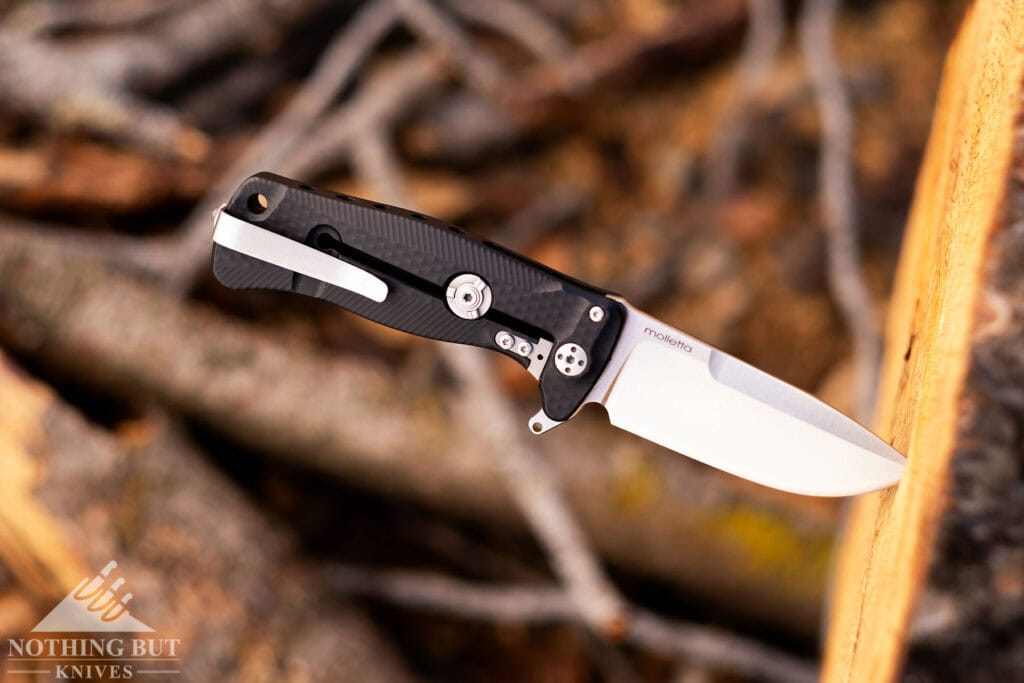
The forefather of the SR22 is the acclaimed LionSteel SR-1 folder; a big, heavy-duty knife, and to my knowledge the first to feature a monoblock handle-construction (called SOLID® knife technology by the company), wherein the entire handle is fashioned out of a single, solid piece of either aluminum or titanium (depending on version). It was followed by the similar-sized SR-11, basically an updated version featuring a flipper. The latter model earned the title of ‘Overall Knife of the Year’ at the 2017 Blade Show.
The collective and respective success of these models (as well as some customer complaints
regarding bulk and weight) encouraged LionSteel to develop the smaller SR-2 and SR-22
models. The SR-11’s downscaled version is what we’re looking at here.
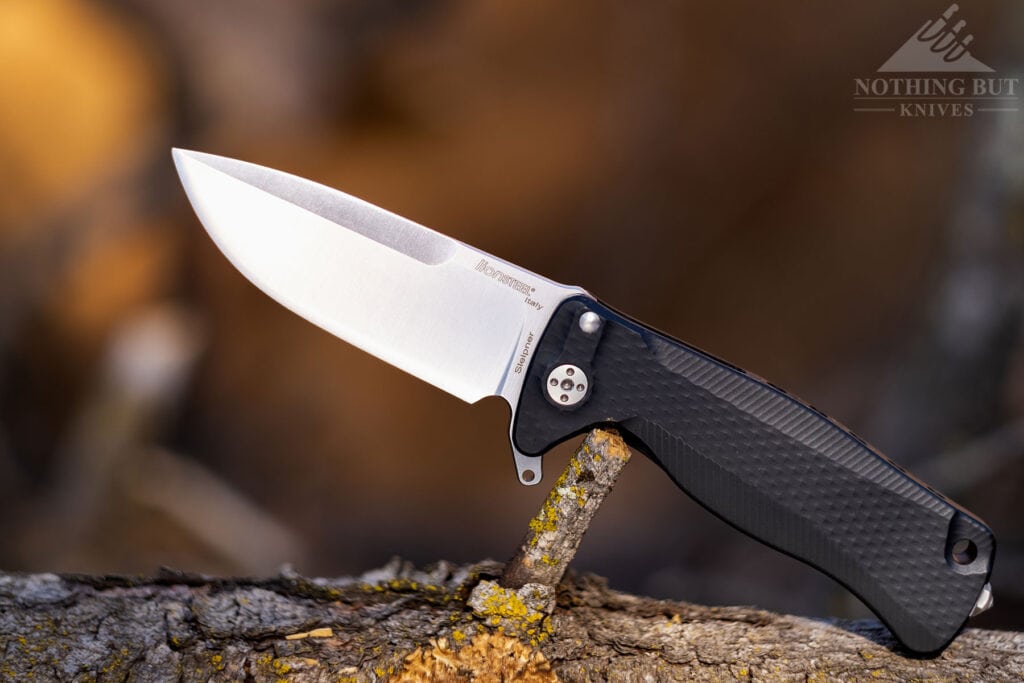
A constant feature throughout the SR-family of folders is the single-piece handle-construction.
I can see death-threats pouring in as I type this, but in my opinion, while it’s a cool design
feature, building an entire line of folders around it was a mistake. If you want your EDC
folder to serve you as anything other than a conversation piece or a safe-queen, then a solid-
piece handle is not the way to go.
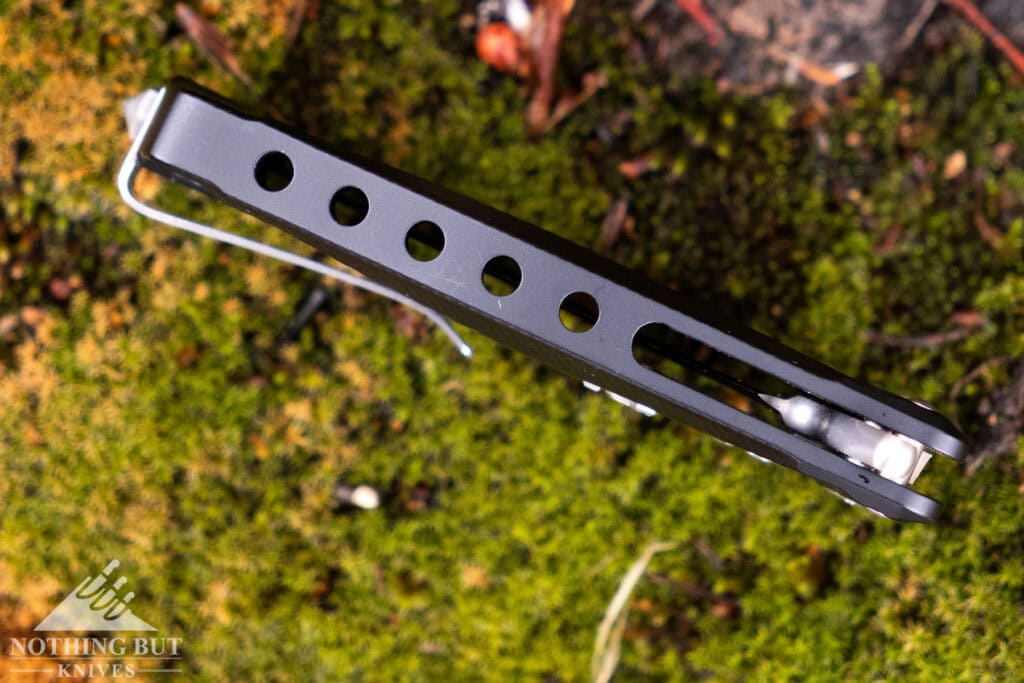
Why? First, there’s a limited choice of materials. You don’t want steel, because using it
would make weight one definite issue, and problems with corrosion at inaccessible inner parts
a probability. Some reinforced synthetic materials wouldn’t be out of the question, but
they’re, to many, decidedly unhip. So basically, you have Titanium or Aluminum. And
machine either of those whatever way you want, one thing you can’t do is make them grippy.
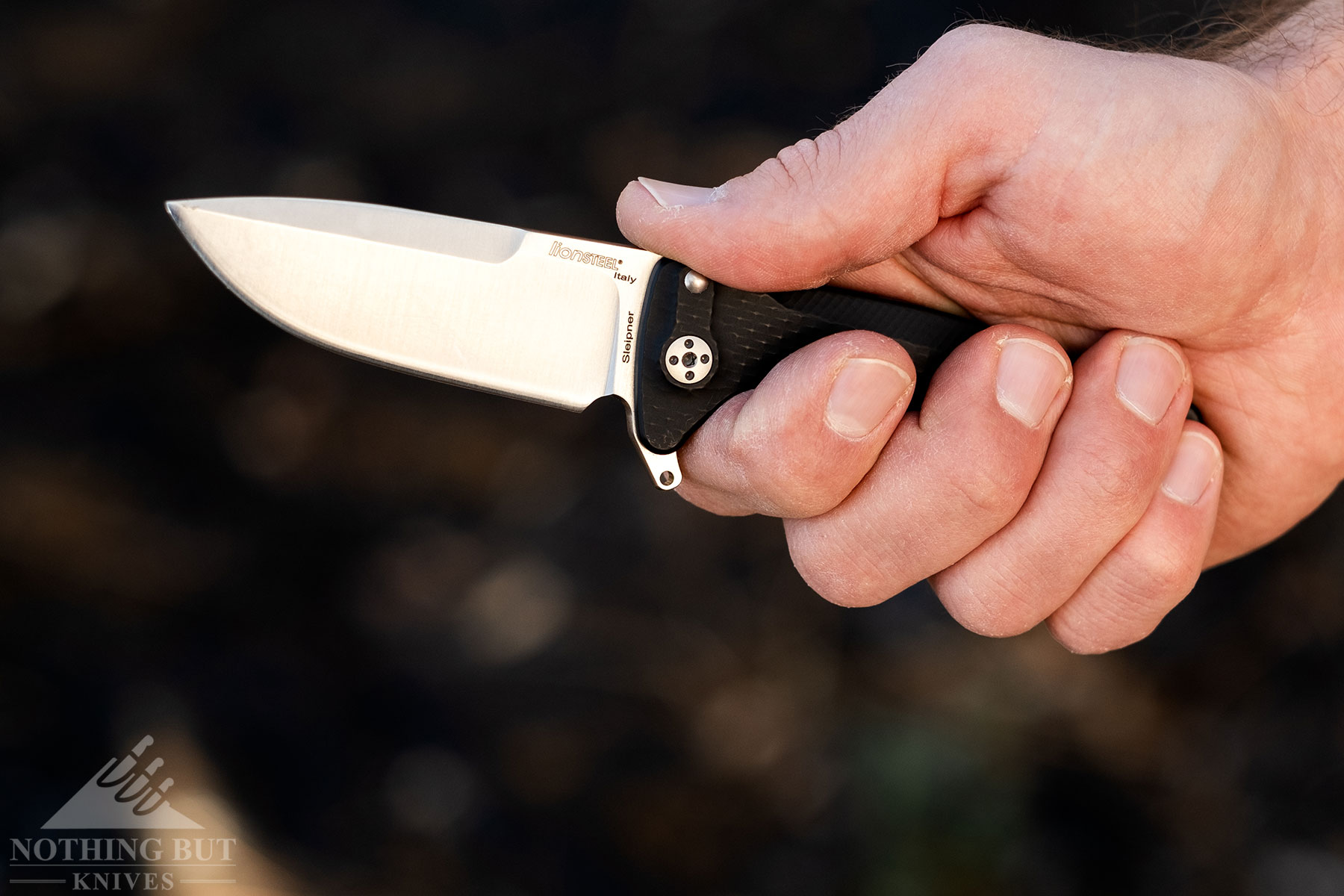
A slippery handle is not a major problem in itself (especially on slower-action folders
featuring a thumb-stud or some similar method of opening), and while I’ve read complaints
about the SR-11’s being a less-than-perfect knife on that score, I think that the bigger model
still has enough real estate on its handle for an average-sized hand to get a firm grip on before
flipping the knife open, thereby keeping slipperiness from becoming a safety issue.
The SR-22, meanwhile, is a good example to illustrate that size does matter; downscaling a
folder by twenty per cent is not merely a question of making every part that much smaller and
slapping together a mini-knife which is identical to the original in every respect besides its
size. No, that process can (hell, does) create a different animal altogether, and bring to the
surface some inherent, dormant issues with the original design.
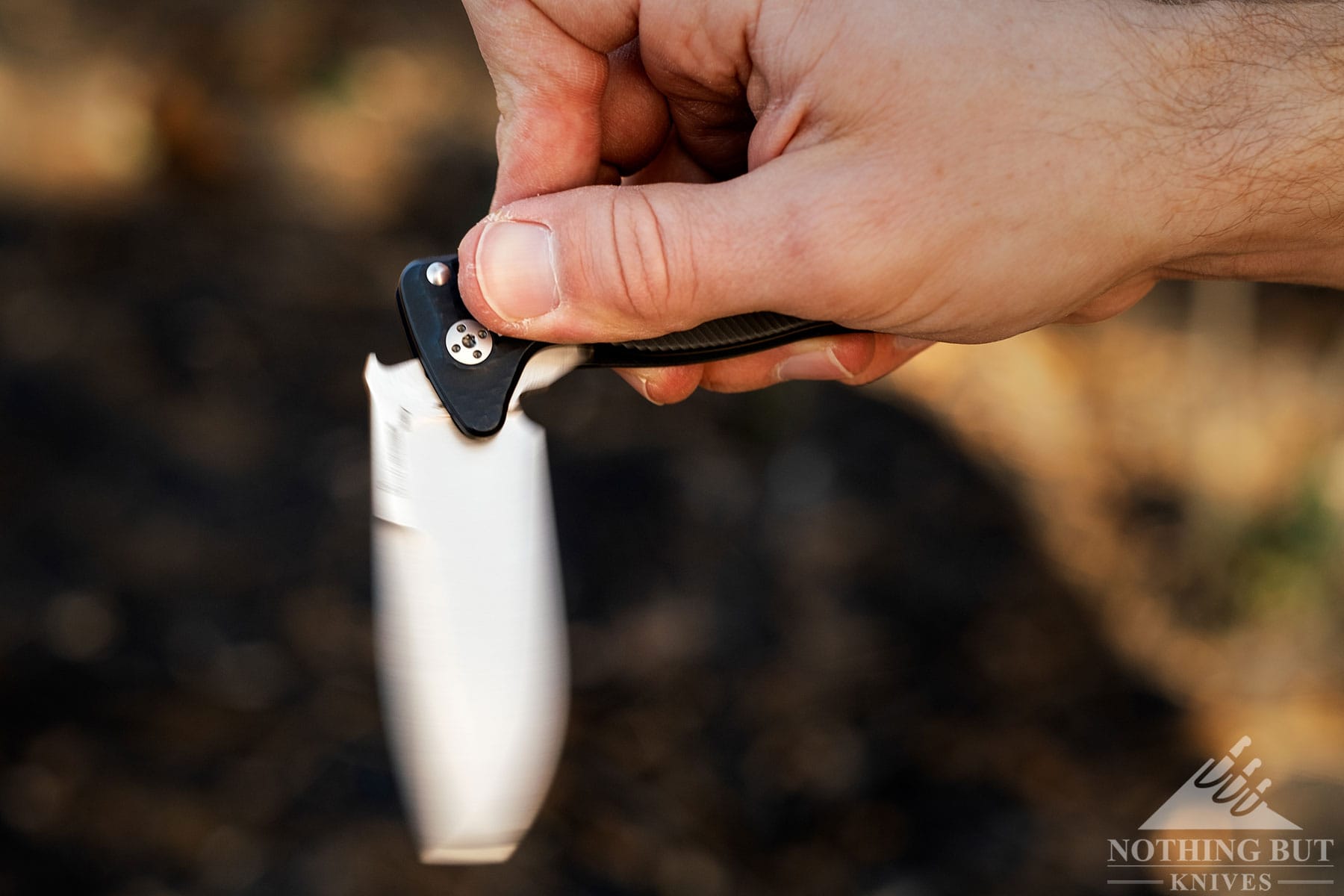
In the particular case of my test example, the problem of lack in grippiness – this is the most
slippery knife I’ve ever seen (well, this side of a prison shank worked into a bar of soap) –
and/or real-estate on the handle to grab onto was (at first) compounded by a tightness of
action in the IKBS mechanism.
In the first few days, the extra force I had to apply to overcome that when flipping the knife
open made me cringe every time I worked the action, because I could see the folder turning
into a pocket-rocket in the blink of an eye, and kept thinking about how embarrassing it would
be, having to ask a screaming old lady, rolling around in agony and clutching her bleeding
thigh, whether I could have my knife back.
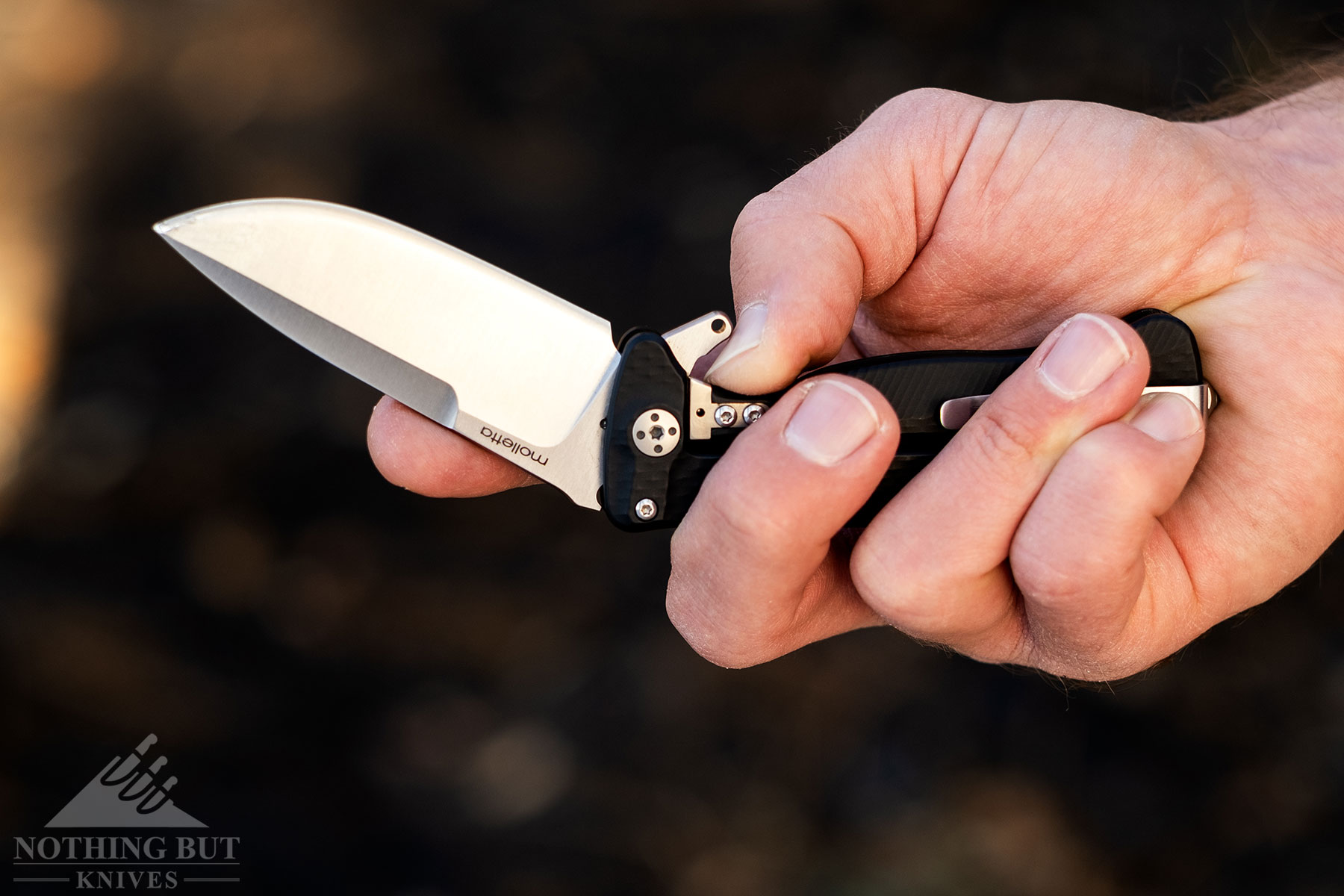
(I solved that problem by applying some oil to the pivot, and things perceptibly improved,
almost immediately. Nevertheless, my point remains that just because a company can design
and produce something cool-looking, it doesn’t mean it’s worth doing, especially considering
what, if anything, the design solution in question brings to the table, in terms of added
strength, durability, and/or function.)
Editor’s Note – The Rotoblock Security System
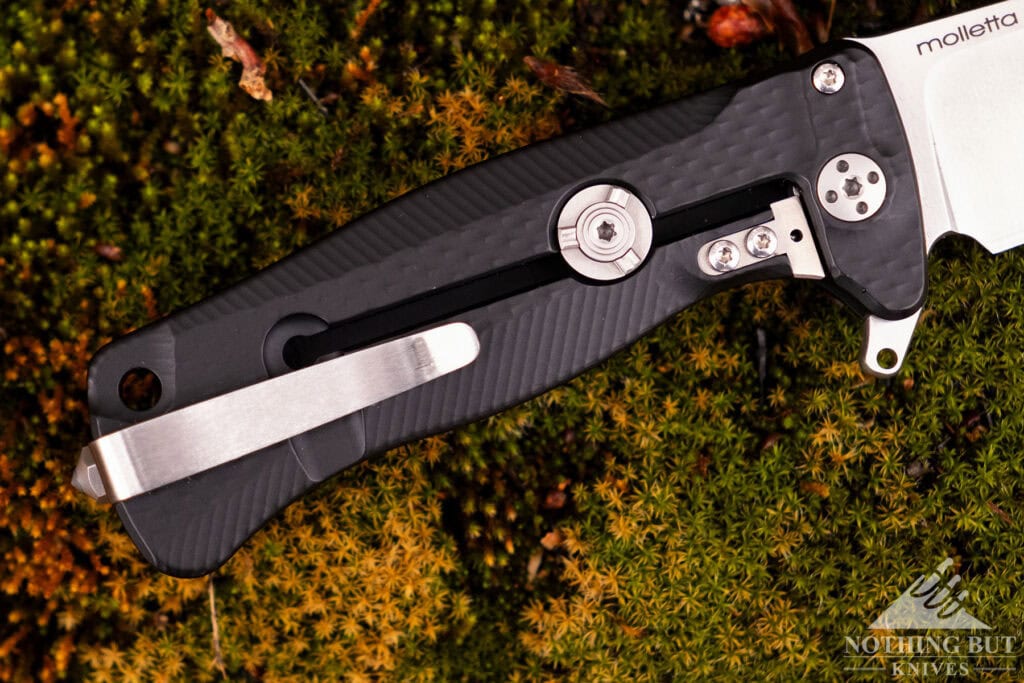
LionSteel chose to add a small disk to the frame lock of the SR22 than can be rotated to lock the frame lock in place called the Rotoblock Security System. I suppose this might be a convenient feature for anyone who is worried that the SR22’s frame lock is not capable of securely holding the blade open on its own, but I found it to be mostly useless and occasionally annoying.
Fortunately, the Rotoblock can be locked in the open position with the help of a T8 hex to ensure it never rotates down to lock your blade open when you don’t want it to. If you feel like you need a folding knife with a bomb proof locking mechanism, check out the Cold Steel 4 Max Scout.
The SR22
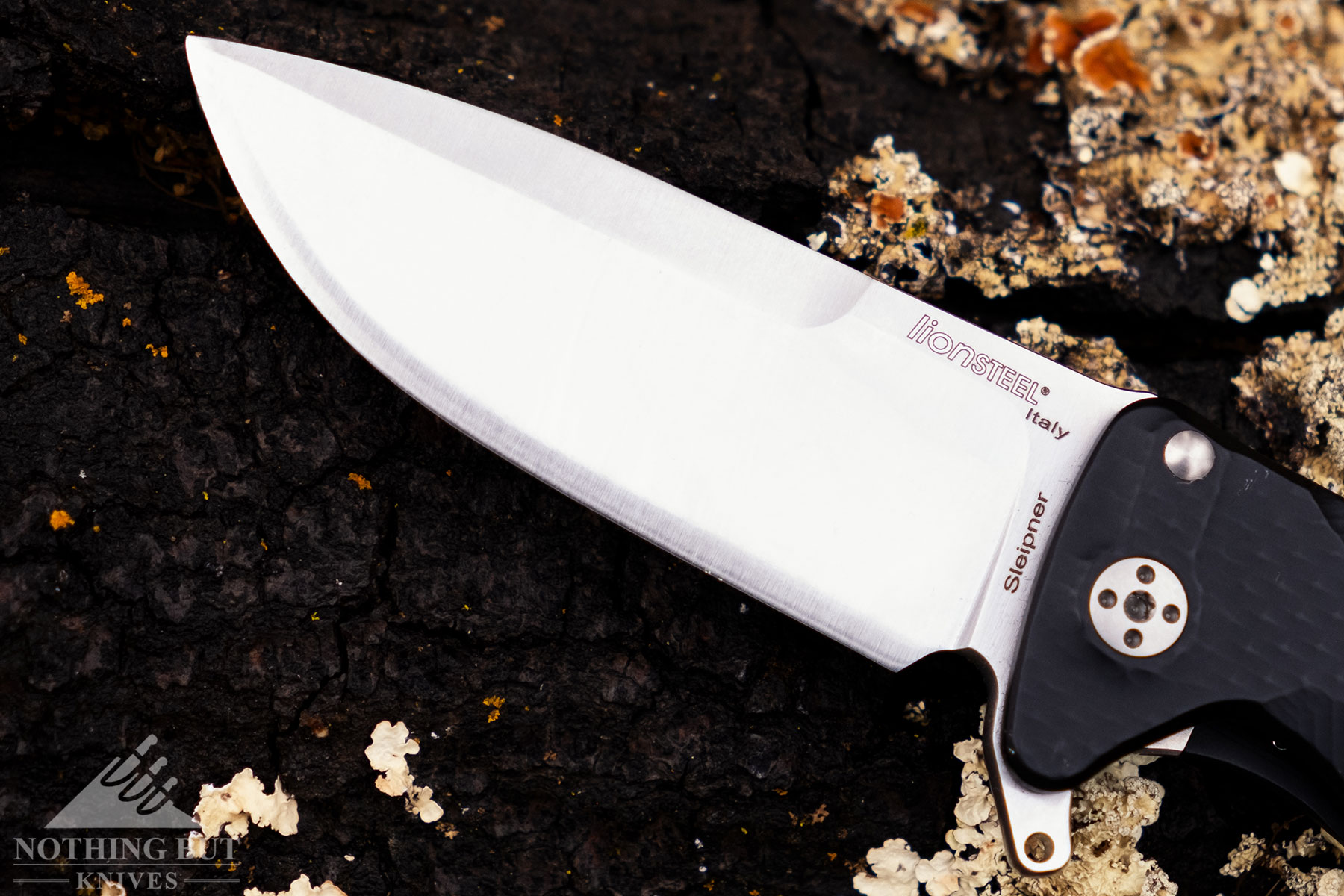
Once you work the knife open, the blade holds a pleasant surprise: the SR-line are the only
folders I know of to feature a convex blade. I’ve to admit that I’m extremely partial to that
blade configuration, and it didn’t disappoint here. The small, drop-point blade has performed
well at every EDC task I’d thrown at it, and the Sleipner steel held up throughout the review
process. (The Sleipner is Böhler-Uddeholm’s proprietary version of D2, with some
improvements centered around toughness; its feedback is generally favorable.)
I’d like to say that I’d said my piece on the handle above, but I’ve got to add that there’s one
more issue with it, having to do with the clip: LionSteel has decidedly clambered onto the
deep-carry wagon, and they haven’t done it halfway.
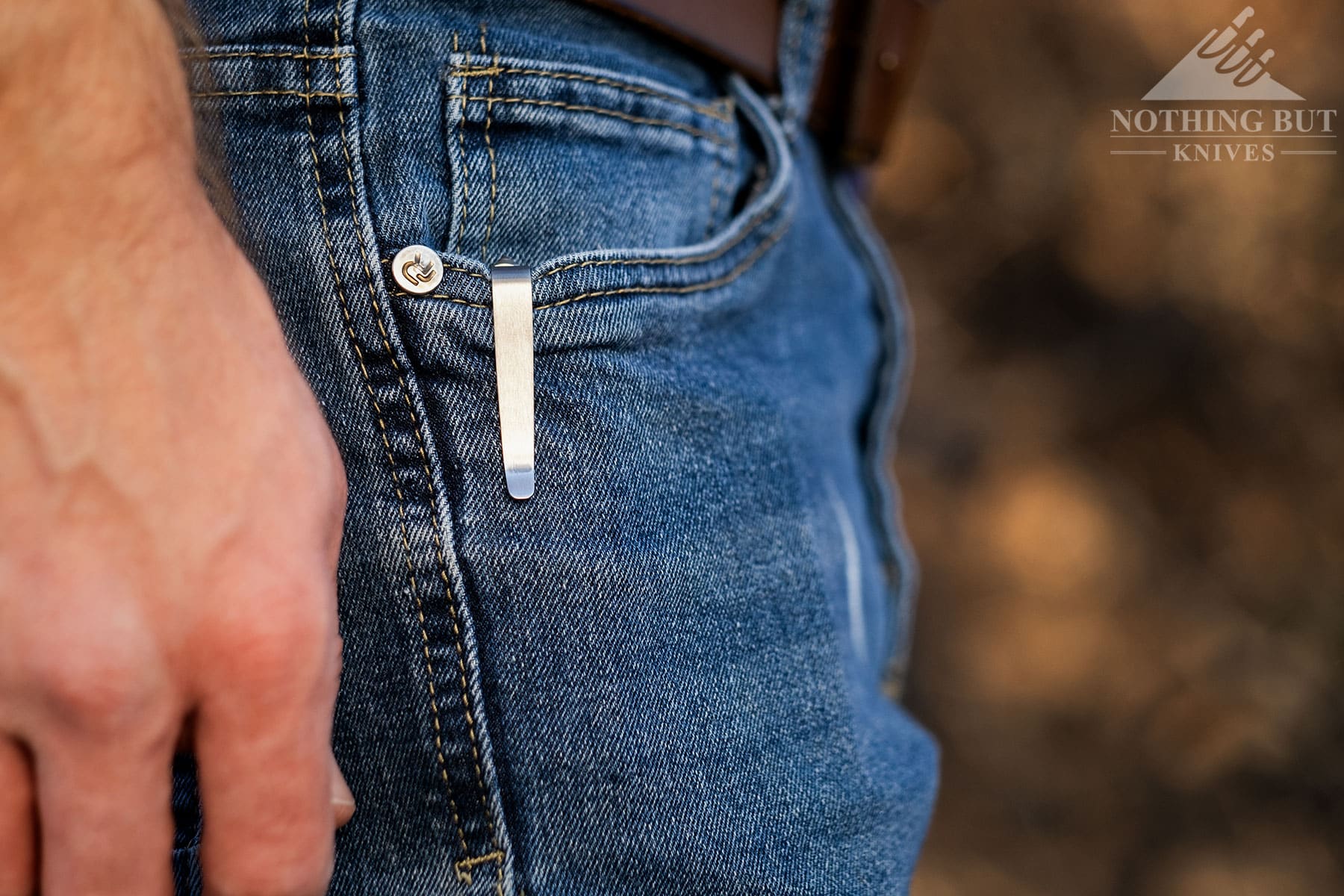
There’s deep carry, and there’s deep carry – and then there’s LionSteel’s deep carry.
They’ve screwed the small but extremely tight clip onto the butt of the (did I mention? small
and slippery) handle (and they did it with the utmost enthusiasm, judging by the clamp-marks
left on the glass-breaker nut holding the clip in place).
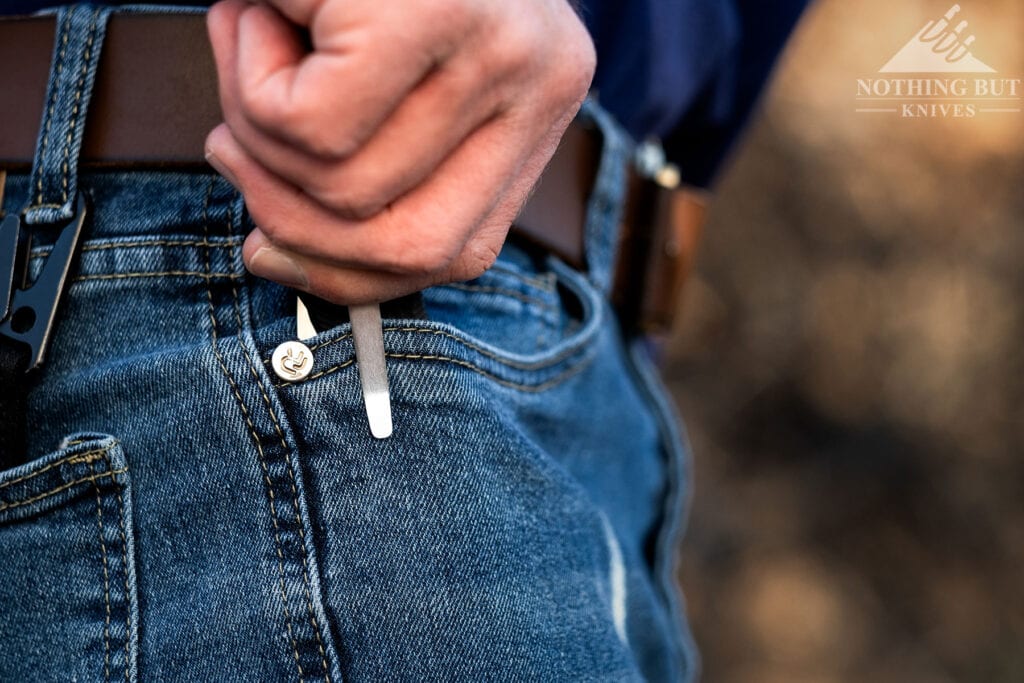
The result is that you need two hands and the wife to wrestle the thing out of your pocket. Not
cool at all.
(Adding a lanyard proved to be a quick fix for that, but I don’t like using lanyards on folders,
unless I absolutely have to.)
The lack of smoothness in the action is one of the main ingredients of the compound problem
outlined earlier in this review. Either my review example is an outlier, or LionSteel really
needs to look into dialing it in better. There was a perceptible fluctuation in the folder’s
performance in this respect: sometimes it worked quite well for a while, almost fooling me
into thinking the problem was gone altogether; then in a few hours, we were back to square
one. I’ve tried everything and then some to fix it: I’m washing my hands on this.
Editor’s Note – I did not experience this issue with the SR22 I received in California which makes me wonder if LionSteel has an anti-Hungary bias due to some 19th century war I never heard of and don’t understand.
IN USE
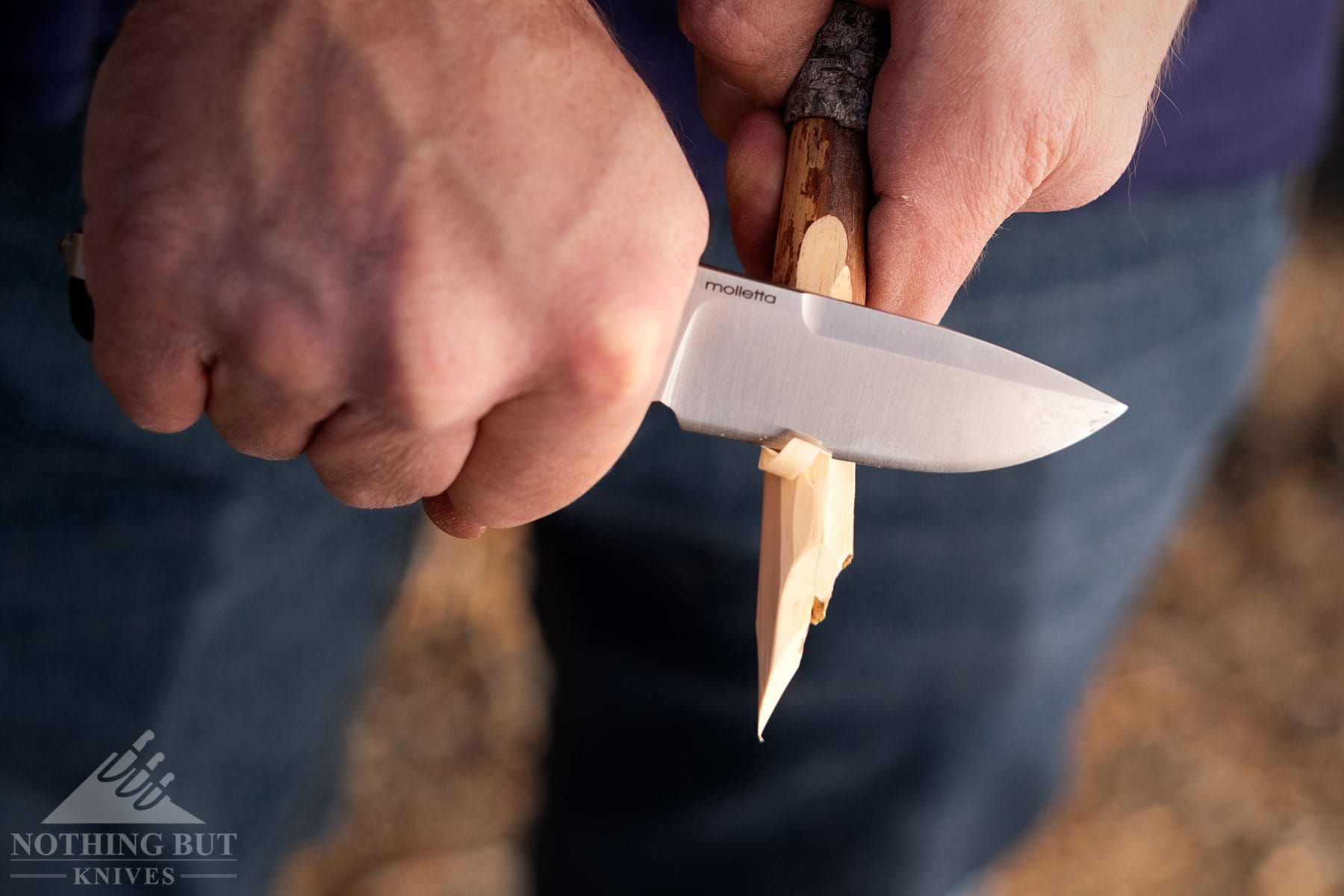
What with the foregoing, while the SR-22 performed okay in every respect that matters, I
would be lying through my teeth by claiming that I’m overwhelmed by its performance. In the
price range we’re talking about, a knife performing as it ought to is, you’ll perhaps agree, not
saying a whole lot. The tasks I included were typical EDC chores; I didn’t bother taking it
with me to the field many times (I treasure life and limb too much for that).
In the kitchen, it did fine, as long as I used caution regarding when and in what conditions I
used this folder. I’ve repeatedly encountered the problem of using this knife with wet and/or
otherwise, slippery hands (see section about life and limb).
COMPARISON AND ALTERNATIVES
I’m not saying that you absolutely should not get the SR-22; but you may want to think about
getting the Böker Plus Leviathan G10 (or its all-steel version) instead.
Yes, they’re made in China – to much tighter manufacturing tolerances and exhibiting a way
superior attention to detail to that which LionSteel’s SR-22 does.
Yes, they’re sporting humbler materials – but not by a lot, considering that D2, when done
right, is not a long way behind Sleipner in terms of overall performance.
Yes, toting a Böker Plus knife (I can hear stockbrokers scoffing) is not as cool as doing the
same with a LionSteel – unless you’re actually more interested in using and having fun with
your knives than you’re in impressing single or not-married-enough secretaries during coffee
break.
(Editor’s note) The Kansept Tuckamore might be worth a look as an alternative. It is a premium EDC with great action and a grip friendly handle. We would like to have sent one to Peter as a comparison, but shipping knives to Europe requires a small fortune and a mountain of paperwork.
Final Thoughts
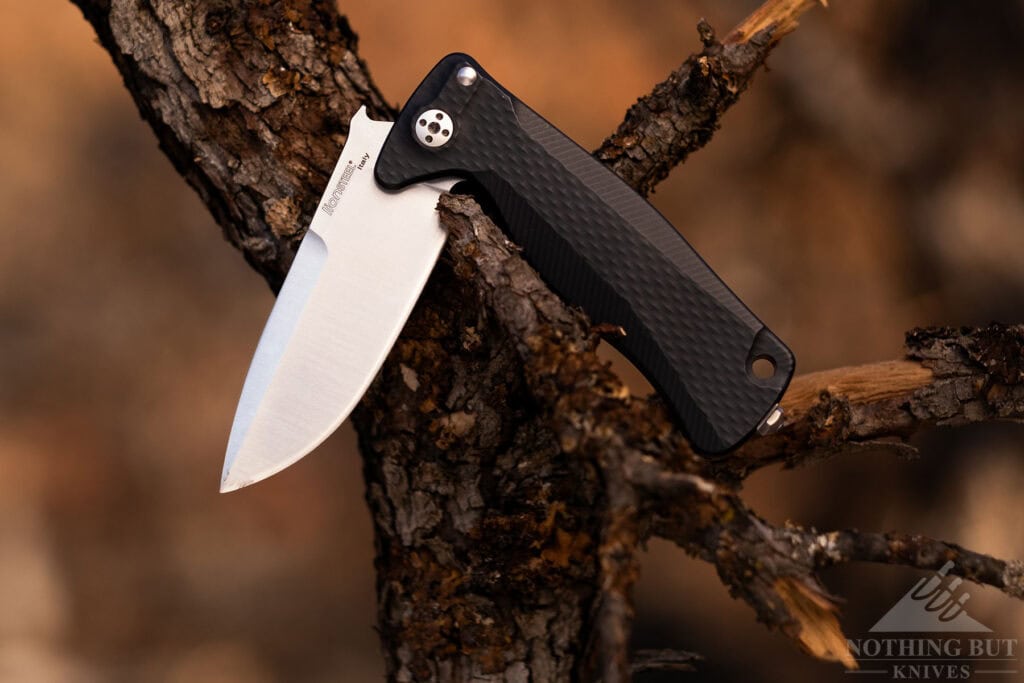
As we in the Life say: I rest my case, Your Honor.
